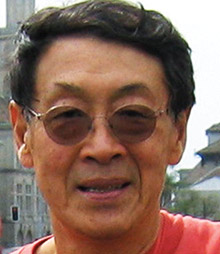Robert Y.C. Hsiung studied visual arts throughout his childhood in China—learning Chinese calligraphy from his father and then watercolor painting from an artist in Hong Kong, where he attended a Jesuit school. In 1952 he won a scholarship to Wisconsin’s St. Norbert College, where he continued watercolor as a hobby. After a family friend suggested that he major in architecture, Hsiung transferred to the University of Illinois at Urbana-Champaign and found his calling.

“Design involved everything I had,” he says. “My mind, feelings, hands, eyes, gut. It was creative, open-ended, involved problem solving.” After graduation, he studied architecture for nine months in Europe, which fueled his passion for the discipline but left no energy for painting.

In 1960, he began graduate studies at MIT, where he focused on large-scale urban design. With classmates, he entered a competition to design Boston’s City Hall. Their design, one of five finalists, marked the first of many MIT collaborations. First he worked 10 years with his thesis advisor, Herbert Beckwith ’26, MArch ’27, a partner in the firm Anderson Beckwith & Haible, ultimately becoming lead designer. Then Pietro Belluschi, former dean of the MIT School of Architecture and Planning, brought Hsiung to Jung/Brannen Associates, a firm cofounded by Hsiung’s classmate Yu Sing Jung, MArch ’62. Until he retired in 2004, he was design principal; he set the firm’s aesthetic standard and taught young architects.
“The expression of architecture has to come out naturally and effortlessly,” Hsiung says. “My buildings are not out there to get attention. They are seldom self-conscious.” Those buildings include Baltimore’s Joseph Meyerhoff Symphony Hall; the Poynter Institute for Media Studies in St. Petersburg, Florida; Tufts University’s Elizabeth Van Huysen Mayer Campus Center; and high-rises at One Post Office Square and 125 High Street in Boston.
Multimedia
Additional Images of Hsiung's Works
Hsiung rekindled his love of painting 18 years ago. He creates landscapes and portraits that aim to render a fleeting instant full of emotion. He plans meticulously, but the actual painting generally happens in one sitting. “Watercolor is fast, clean, spontaneous,” he says. “It’s almost like a performance to me.” He has won prizes, sold numerous paintings, and exhibited work in regional and national shows.
These days he spends much of his time painting, teaching at Boston Architectural College, and completing small design projects, donating proceeds from his painting and architecture to charities. He also practices tai chi and plays tennis and squash. He and his wife, Dora, live in Newton Centre and have two daughters, a son, and three grandchildren.
Keep Reading
Most Popular
Large language models can do jaw-dropping things. But nobody knows exactly why.
And that's a problem. Figuring it out is one of the biggest scientific puzzles of our time and a crucial step towards controlling more powerful future models.
The problem with plug-in hybrids? Their drivers.
Plug-in hybrids are often sold as a transition to EVs, but new data from Europe shows we’re still underestimating the emissions they produce.
Google DeepMind’s new generative model makes Super Mario–like games from scratch
Genie learns how to control games by watching hours and hours of video. It could help train next-gen robots too.
How scientists traced a mysterious covid case back to six toilets
When wastewater surveillance turns into a hunt for a single infected individual, the ethics get tricky.
Stay connected
Get the latest updates from
MIT Technology Review
Discover special offers, top stories, upcoming events, and more.